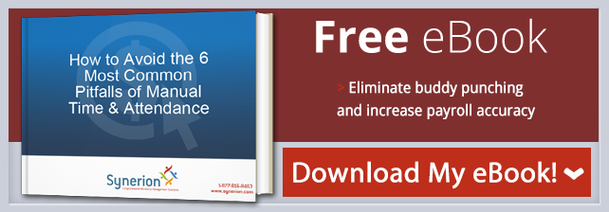 Sick days are inevitable yet the way businesses tackle sick days varies drastically by industry and company. Determining the best way to serve your employees and your business with sick days requires a system that’s both flexible and optimized for your own employees and business. Consider the benefits and drawbacks of each of these commonly used sick day systems to determine which would work best for your company.
Sick days are inevitable yet the way businesses tackle sick days varies drastically by industry and company. Determining the best way to serve your employees and your business with sick days requires a system that’s both flexible and optimized for your own employees and business. Consider the benefits and drawbacks of each of these commonly used sick day systems to determine which would work best for your company.
Paid Time Off (PTO)
One popular system is a PTO-based system where employers don’t distinguish sick days from vacation days. Instead, each employee has a bank of time off that accumulates annually and they may use that time as they see fit. The benefit for the business is that this system simplifies timekeeping and is more straightforward for employees. While simple to use, it also has the significant drawback of not providing a clear mandate for sick days. Employees may feel pressured into working sick either because they already used their PTO or managers discourage the use of unplanned PTO. Ultimately, the PTO system isn’t perfect but many businesses and employees prefer it due to its flexibility and simplicity.
Vacation and Sick Days
If PTO isn’t for your company, separating vacation days from sick days is one way to ensure employees are able to take planned and unplanned time off. While this system isn’t as simple as PTO, it does provide a clear mandate for employee sick time. Employees who frequently need medical appointments or have ongoing illnesses also prefer this system because they can plan appointments and vacation without one interfering with the other. Interestingly, criticism of this system rarely comes from the employer but rather employees who don’t use sick time. Healthy employees may see “sick hours” as wasted. While separating vacation and sick days may cause more headaches for payroll, it ultimately provides a good balance for employees who require frequent sick days.
Unlimited Leave
Tech start-ups and more progressive companies have been implementing unlimited leave where employees work with their managers and team to plan time off and take sick time as needed. This system is best for industries where remote work and flexible hours are the norm. Businesses that require a certain number of employees on-hand may have a difficult time properly implementing and maintaining an unlimited leave system. While employees enjoy the independence and respect that unlimited leave confers, it is more difficult for managers to maintain. The threat of understaffed departments and abuse of the system is real so there needs to be over sight not needed with other systems.
Other Considerations
While these three systems largely cover the variety of ways businesses offer sick days, there’s individuality in every business’ policy. Some employers offer separate dependent care time while others allow employees to use sick time for themselves or their family. Some workplaces plan for “mental health days” or “personal holidays” for employees to take a day off for themselves while others just consider mental and physical health to be one in the same. Employers interested in creating an ideal system need to work with their employees to identify not only what sick day policy is needed but also how that sick time will be used.
The only wrong system for offering staff sick days is no system at all. By identifying employee needs and coupling them with business needs, employers can create an individualized time off policy that works for both themselves and their employees. Start by choosing a basic plan for sick days and then identify employee needs to make that system work better.
